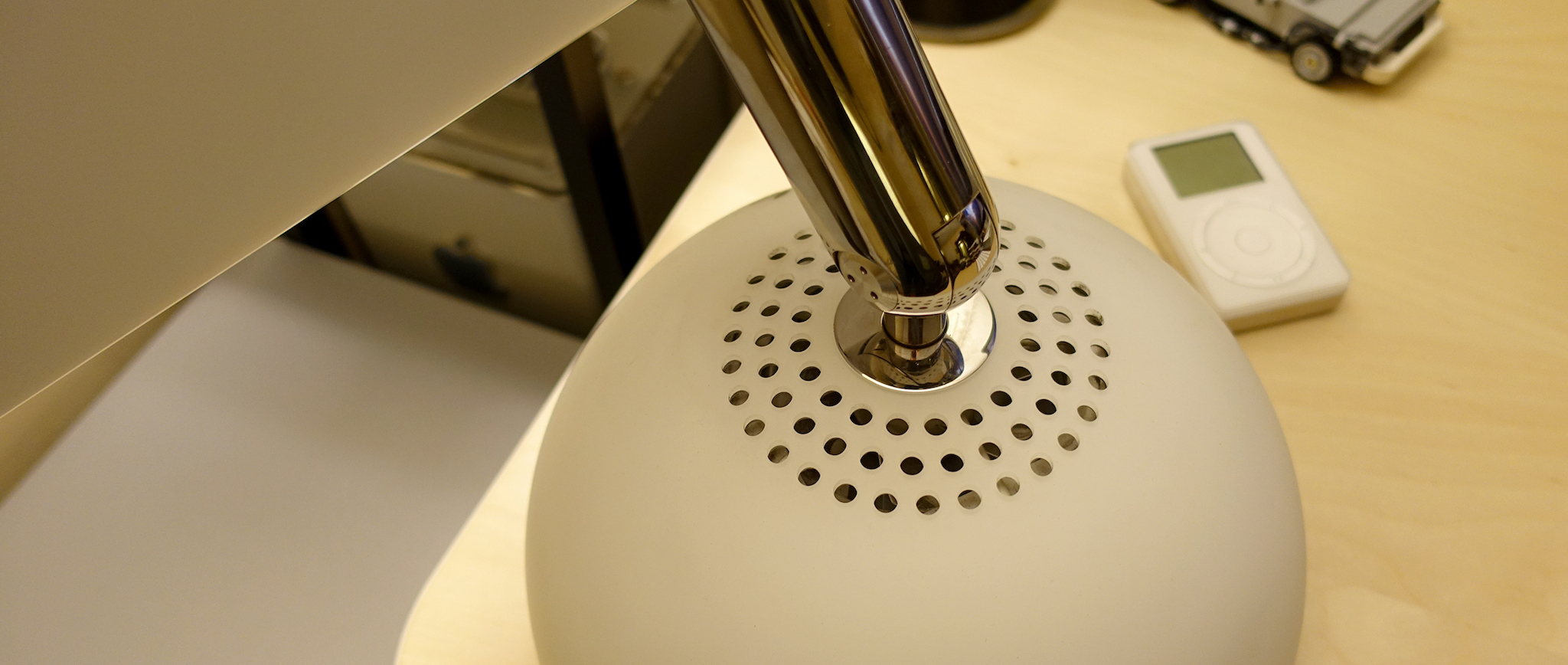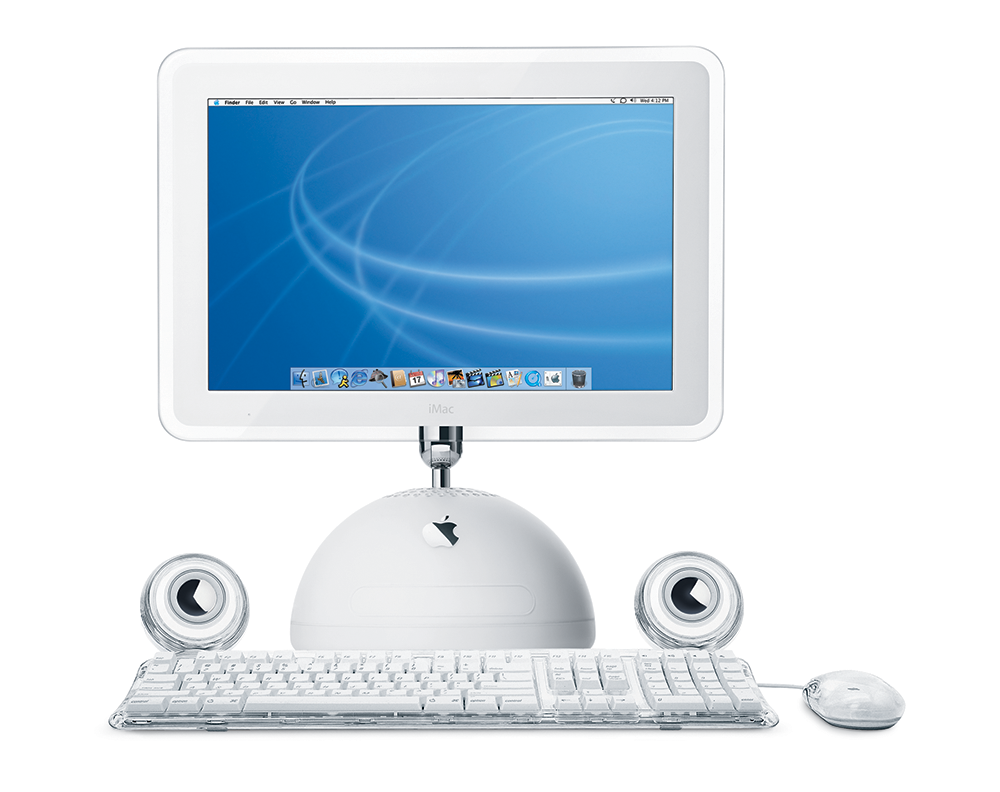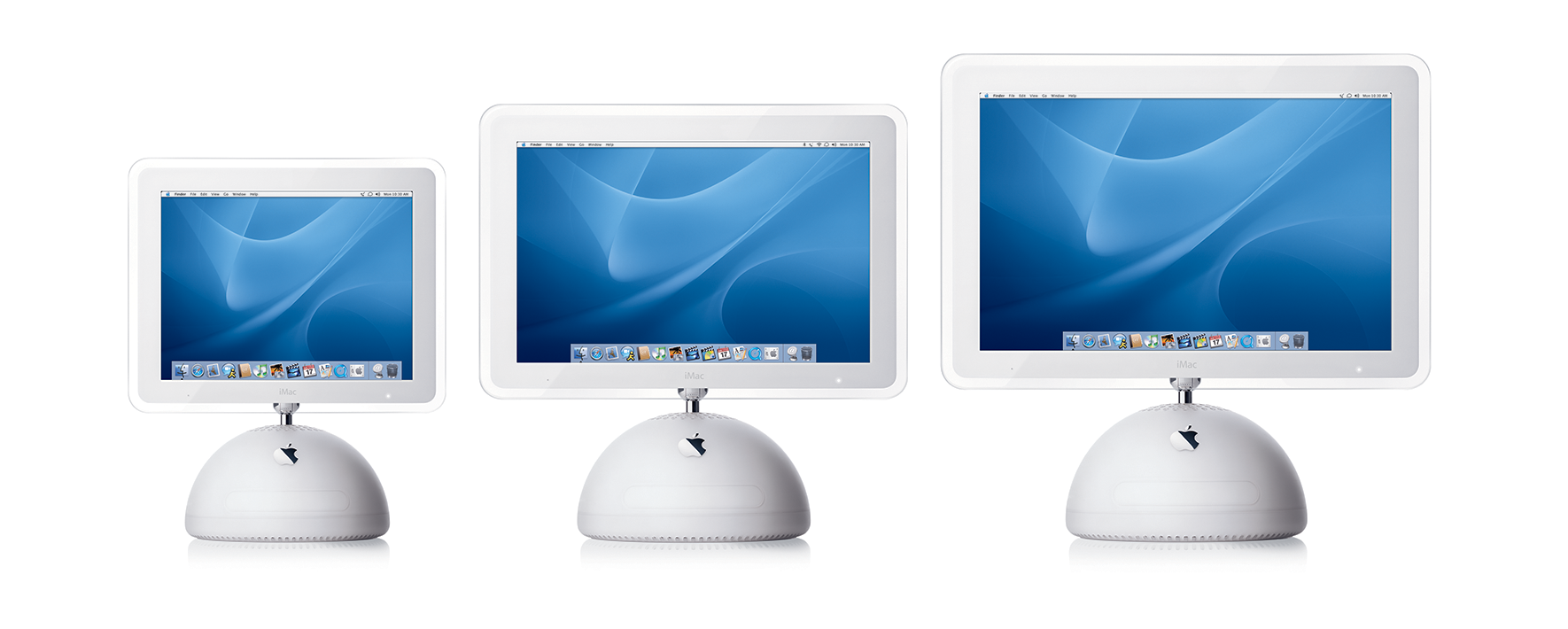iMac G4: Form, meet function

In 2002, One year after outlining the Digital Hub strategy, Steve Jobs unveiled one of the most iconic computers of the 21st century: the iMac G4.
This new computer made the machine that helped save Apple look much older than it actually was. Gone was the heavy, bulky CRT; in its place, a 15-inch LCD screen. Twice as bright and twice as sharp as the old CRT, it was a major upgrade. The new iMac also featured a G4 processor making things like DVD creation in iDVD possible on a consumer machine for the first time. Also on board was a SuperDrive, allowing users to burn both CDs and DVDs.
In teasing the new design, Apple joked about simply "chopping off the back" of the iMac, putting the logic board and other components behind the display. And indeed, while Apple would design the iMac G5 just that way two and a half years later — and every iMac thereafter — in 2002, the technology just wasn't ready.
According to Jobs, to do so, Apple would need to need to slow down the spinning drives, lowering hard drive performance, and the SuperDrive would be unable to ship. Instead, Jobs said, Apple "let each element be true to itself. If the screen is flat, let it be flat," he said. "If the computer wants to be horizontal, let it be horizontal."
This lead to an amazing design. The result, to my eye, is still stunning:

When it first rose from the stage during the keynote, people gasped. The base was a small, all-white half-dome that measured just 10.6 inches across. All of the ports, including power, modem, Ethernet, USB and Firewire were arranged horizontally around the back for easy cable management:

The screen floated above the base, suspended in mid-air on a chrome arm. And that arm had several tricks up its shiny, metal sleeve: In addition to allowing the user to adjust the height of the display, the screen could be angled up or down and even swiveled to the side, all with the touch of a finger. The engineering that went into this is, to this day, impressive, and opening one of those machines up for repair was no trivial task.
Master your iPhone in minutes
iMore offers spot-on advice and guidance from our team of experts, with decades of Apple device experience to lean on. Learn more with iMore!
The arm also gave the iMac boatloads of personality, which Apple showed off in this ad and the product video used to introduce the machine:
The 15-inch model wasn't the only iMac G4 SKU Apple sold. In July 2002, Apple added a 17-inch model that used the same panel used in the 17-inch PowerBook G4. In November 2003, a massive 20-inch model was added to the line as well:

By the time Apple replaced the iMac G4 in the summer of 2004, it'd become quite powerful as well. Packed with USB 2.0 and a 1.25 GHz G4, the iMac was beginning to creep into what was considered desktop territory just 12 or 18 months earlier.
Today, the iMac line is far broader than it was back in 2002. From the low-end machine to the loaded 27-inch Retina monster, the iMac can meet the needs for almost all desktop users. And while this iMac G4 was the start of that to a small degree, its true place in history is cemented by its industrial design: 14 years later, it still looks modern.
Stephen Hackett is the co-founder of the Relay FM podcast network. He's written about Apple for seven years at 512 Pixels, and has more vintage Macs than family members living in his Memphis, TN home.

